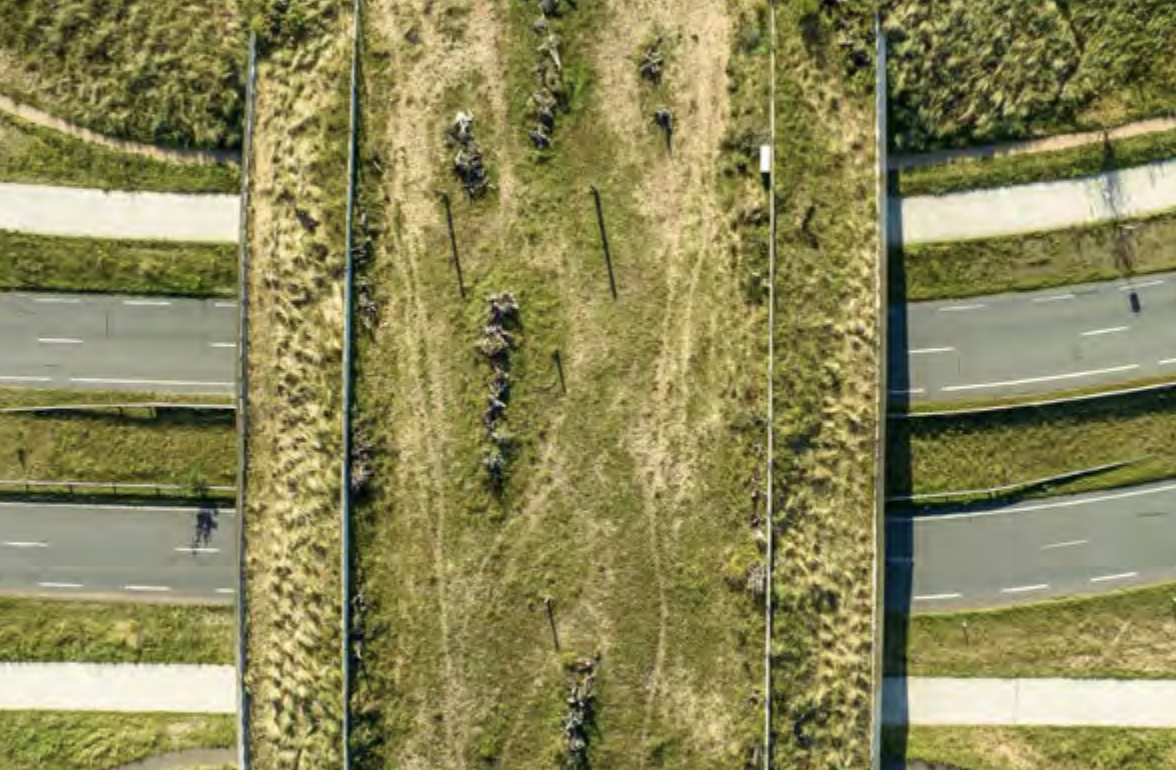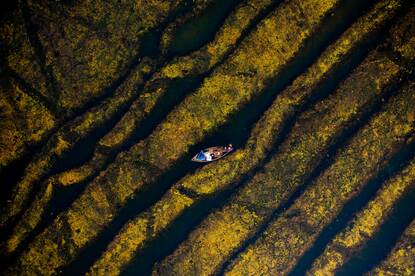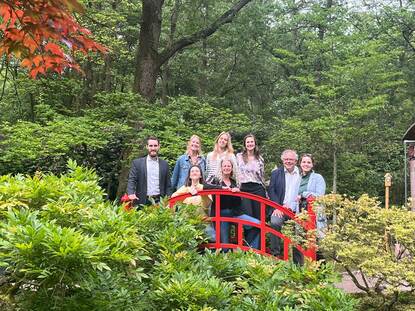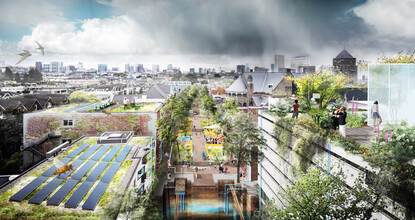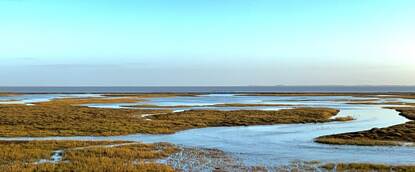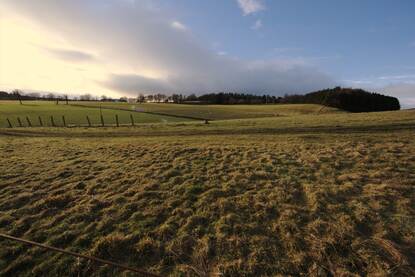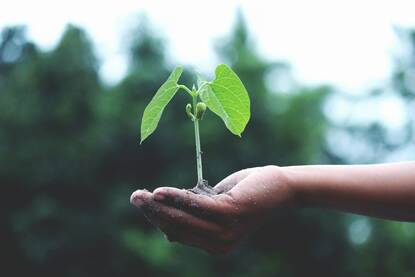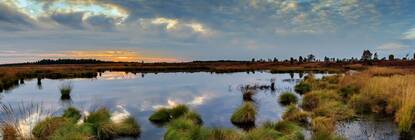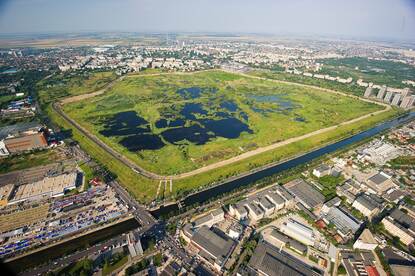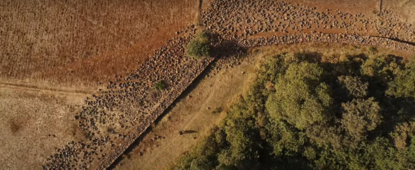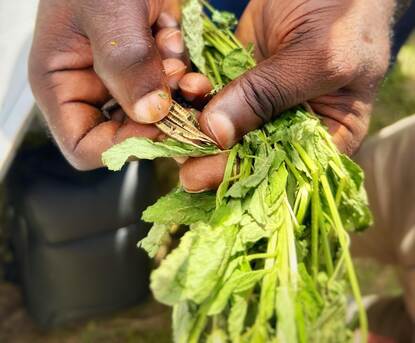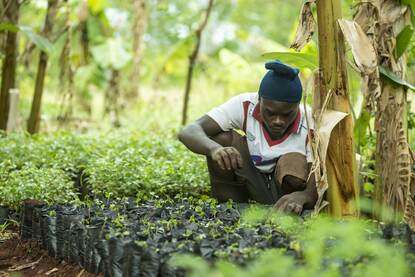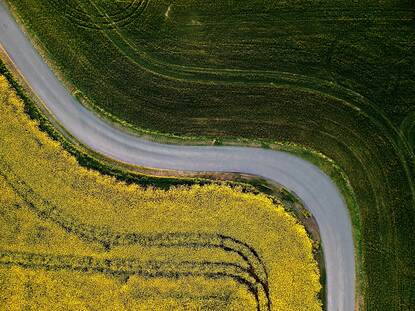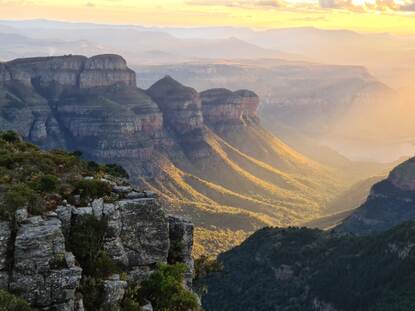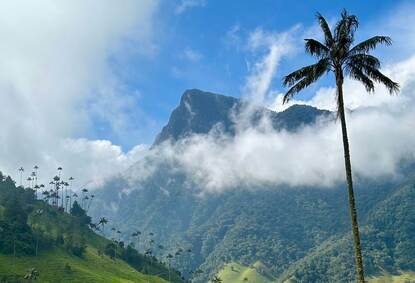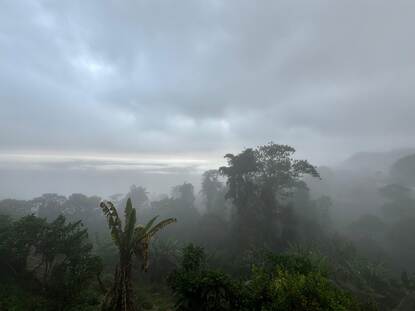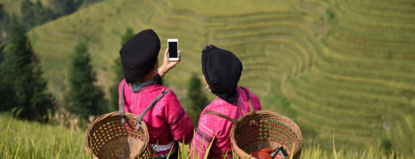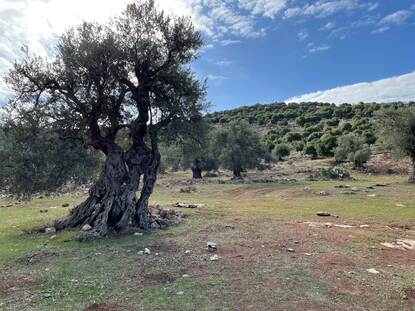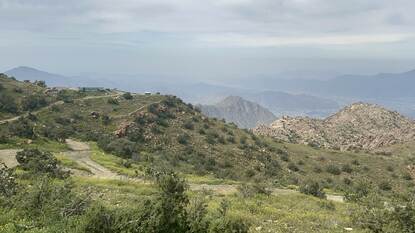Foto Nature Inclusive Agenda 2.0
Wytze de Vries is the head of the Nature-inclusive program office at the Ministry of Agriculture, Fisheries, Food Security, and Nature. The Nature-inclusive program office coordinates and facilitates the public private cooperation on ten domains, and the movement of Collective Nature-inclusive. ‘We are a program of hope and unity,’ says De Vries. ‘Essentially, our work is about our transformation as humans. We have distanced ourselves from nature, placing ourselves above it. However, we need to become part of nature again and move towards a healthy society.’
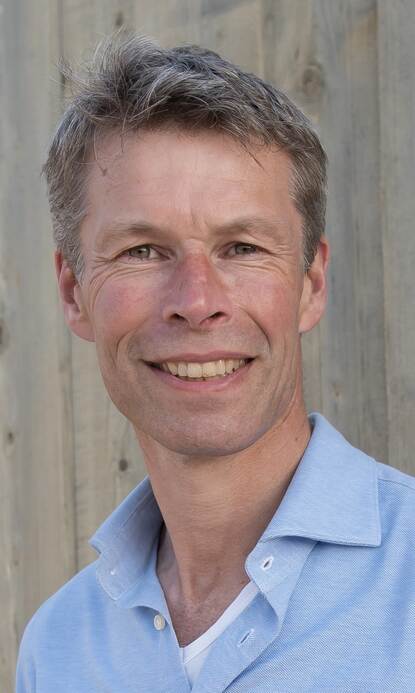
Can you tell us more about the program office and the Nature-Inclusive Collective?
In the Nature-inclusive Collective, green pioneers from companies, civil society organizations, citizen initiatives, knowledge institutions, youth, and governments are working together on the transition to a nature-inclusive society. We collaborate with multiple parties to implement the Nature-inclusive Agenda 2.0. We do this across ten domains: health, education, the financial sector, water, leisure economy, construction, business parks, agriculture, energy, and infrastructure. Each domain is led by someone from the respective sector. For example, the CEO of Ballast Nedam for construction, the CEO of the NW Bank for the financial sector, and the CEO of Dunea for water. The program office aims to accelerate the transition by connecting parties, cross-pollinating between domains, hosting large events, offering inspiration, communicating, and realizing governance agreements.’
Is nature-inclusive the same as biodiverse?
‘With nature in protected areas alone, we cannot achieve healthy biodiversity. Nature-inclusive is essential; we need nature in our work- and living environment. This nature needs diversity for healthy ecosystems and a healthy environment.’
What is the importance of the Nature-Inclusive Collective?
‘Nature-inclusivity and biodiversity are much worse off than, for example, our climate. Since the Paris Agreement, much has been done about our climate. In addition, climate developments can be measured with temperature and CO2. But that’s not the case with biodiversity. It's such a versatile, complex and magical system. And it’s very difficult to integrate into our human-made measurable world.’
‘The Collective tries to take important steps to promote biodiversity. On the one hand, we aim to connect to the existing systems and measures. For example, we are working on an investment agenda. Also, we are busy with meta-monitoring. We want to know: what is our impact? Are we on the right track?’
‘On the other hand, we don’t want a top-down government approach. Instead, we look at what monitoring systems business parks use, for example, or what the healthcare sector uses. Moreover, we don’t always need to know everything. Especially this period where there is so much to gain with regard to nature-inclusivity. The director of ASN Bank put it beautifully: I don’t always need precise calculations to know I’m making an investment in the right direction.’
‘The same applies to our movement. If we create a nature-inclusive neighborhood — ensuring there is green space in the environment, gardens, green roofs, green facades, and water flowing through the neighborhood — we don’t necessarily need to measure the ecological impact exactly. The impact is immediately visible to the people who live there. They see frog and insect populations increase. They see plants and flowers grow. Eventually, we want to know and measure, but for now, the motivation and energy behind our goals is most important.’
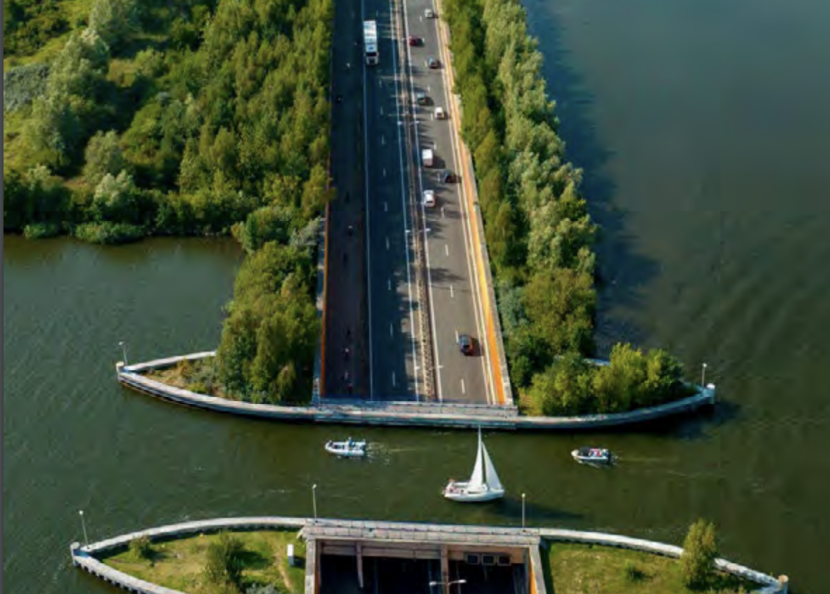
Do you need an investment agenda for that?
‘The term ‘investment agenda’ is misleading. An investment agenda usually means: Hey, we have a problem. This is the solution. We need this much money, and you must pay for it. So, we are looking for a different term. I’m not sure what it will be, yet. But it will be more like an investment perspective.’
‘From that investment perspective, we first look at the long term: what is needed? What financial streams need to be redirected or shifted to ensure that nature is integrated into economic, business, and spatial decisions? On the other hand, we look at the short term: if we want to implement the Agenda 2.0, with all the ambitions and actions from the domains for the next three years, how much will we need to invest?’
And how much investment is needed over the next three years?
‘About 75 million euros.’
That doesn't seem too bad?
‘Last year, the Ministry of Agriculture, Fisheries, Food Security and Nature, together with the Ministry of Finance, conducted an intergovernmental study on biodiversity. It was published in July last year. The study came to an amount of 8 billion euros. That’s a much higher figure than 75 million euros, but not nearly as much as the 25 billion euros which was planned to tackle the nitrogen problem or the 35 billion euros for climate measures. So, yes, it’s manageable.’
‘Also, you must keep in mind: if you invest in nature, it will cost you something at first. But over time, it will pay off. I had a conversation this morning with the domain leader of business parks and yesterday with the domain leader of health. Both said that staff deployment in their sectors is becoming increasingly important. Meanwhile, it turns out that a green, healthy environment demonstrably helps productivity. So, business parks and healthcare want to create more green spaces around their organizations.’
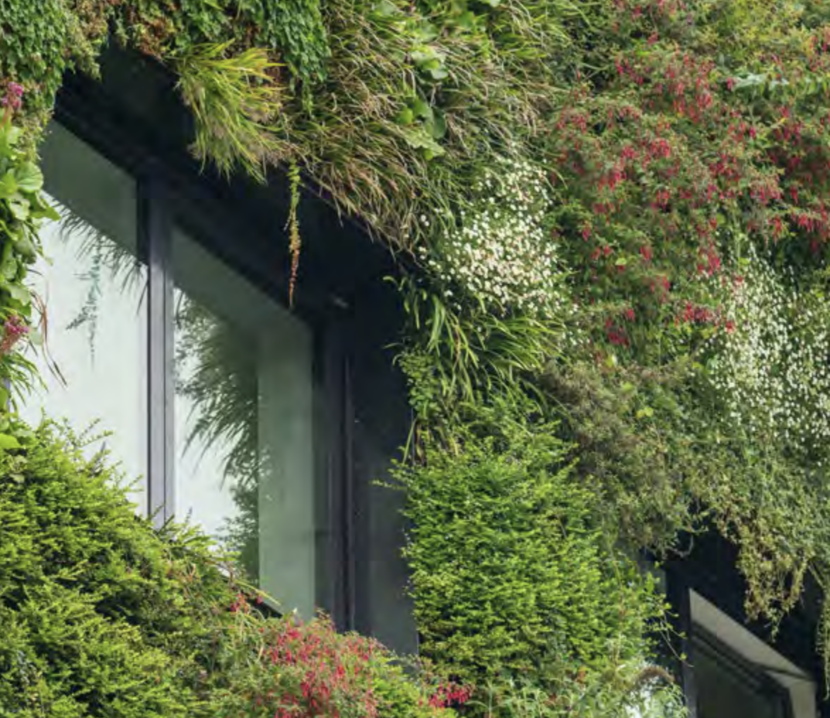
And how do you create more green spaces?
‘Communication is key: ensuring a positive narrative. We also show examples of what’s already happening in daily life. But that doesn’t always have the desired effect. The domain leader of business parks, for example, has the most climate-adaptive business park in the Netherlands, in Friesland: the Ecomunitypark. It had 200 visitors last year, but none of them have acted afterwards. That’s why we work with behavioral experts. They help answer the question: how do we engage the silent majority?’
‘We are also exploring what we can achieve with government instruments or a stimulus fund: to what extent do you need to set more standards or requirements? But we are very cautious about that. We don’t want to crush people’s intrinsic motivation, which is extremely valuable. If we use instruments and regulations, we want to carefully examine whether they will have any negative consequences.’
You work across ten domains. Why is that?
‘If you read the media, you might conclude that many of our current problems are due to farmers, and that they are the ones resisting change. But a study by the Netherlands Environmental Assessment Agency (PBL) shows that as many as 40% of farmers are already taking nature-inclusive measures, even if it’s just small ones like planting hedges or vegetation on their land. We regularly sit down with farmers. We see that some of them are taking significant steps. Many more are taking smaller ones.’
‘Farmers also see the importance of nature and how their farming practices contribute to soil infertility. But often, they are trapped in the traditional agricultural system — financially as well, with large debts. We are all partly responsible for that ourselves. We are all consumers, and we all refuse to pay for quality food.’
‘The Nature-inclusive Collective wants to be a positive movement. We want to help others work step by step towards nature-inclusive operations. This applies to different domains, such as: infrastructure companies, the healthcare system, farmers, and more. We must understand that agriculture plays a crucial role. But we must also realize that responsibility lies across all the domains we work in. I strongly believe that the solution must come from all of us. It’s not just farmers, it’s not just industry or mobility. We really must do it together.’
The Nature-inclusive Collective wants to be a positive movement. We want to help others work step by step towards nature-inclusive operations
Biodiversity is not just about restoration, but also prevention, is it not?
‘That’s right. For that, we need our educational system. In many schools, a lot is already done, but unfortunately not enough. In many cases, traditional agricultural education is prevalent. We need to persuade these institutions to recognize the opportunities of nature-inclusivity and biodiversity.’
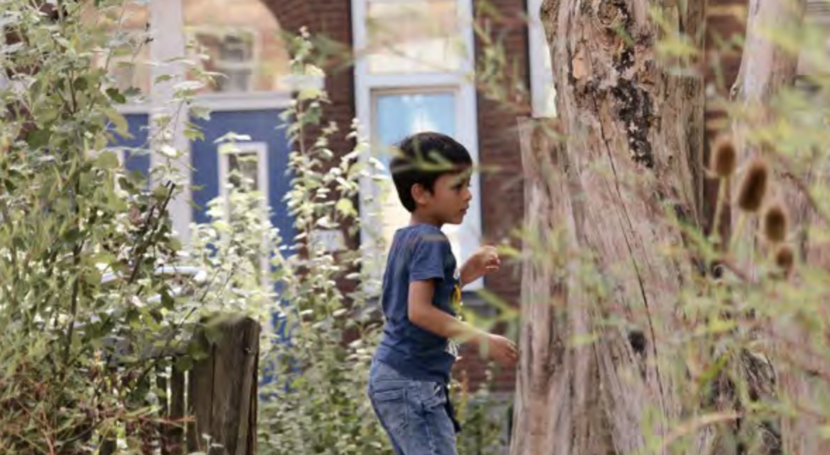
How do you do that?
‘We have about 20,000 schools. They all have their own school boards. These boards decide for themselves how green they want their schoolyard, buildings, curriculum and education to be. So, our role is not so much in setting standards, but rather in providing inspiration, sharing best practices, and communication. We’re also looking for a coalition of the willing. Is there, within an educational institution or an agricultural program, a group of people willing to act, and can we facilitate and help them?’
Finally, you mentioned you want to tell a positive story. When you look to the future, what do you see?
‘I’m hopeful. Our former ambassador, former Director-General of the National Institute for Public Health and the Environment (RIVM) and former Secretary-General of Agriculture, Nature, and Food Security André van der Zande, wrote to the Dutch Parliament: we are a program of hope and unity. I get emotional when I repeat his words because it shows how important it is what we are working on. It’s about our own the future, and more importantly: the future of our children.’
‘Our work is about us, about our transformation as human beings. We have distanced ourselves from nature, placing ourselves above it. But we need to become part of nature again. We also need to address our own human nature and move towards a healthy society. I believe that the concrete actions we are taking, combined with this human transformation, will create a movement that can no longer be stopped. So yes, I’m hopeful.’
More information
To read and learn more about the Nature Inclusive Agenda 2.0, please click here.
